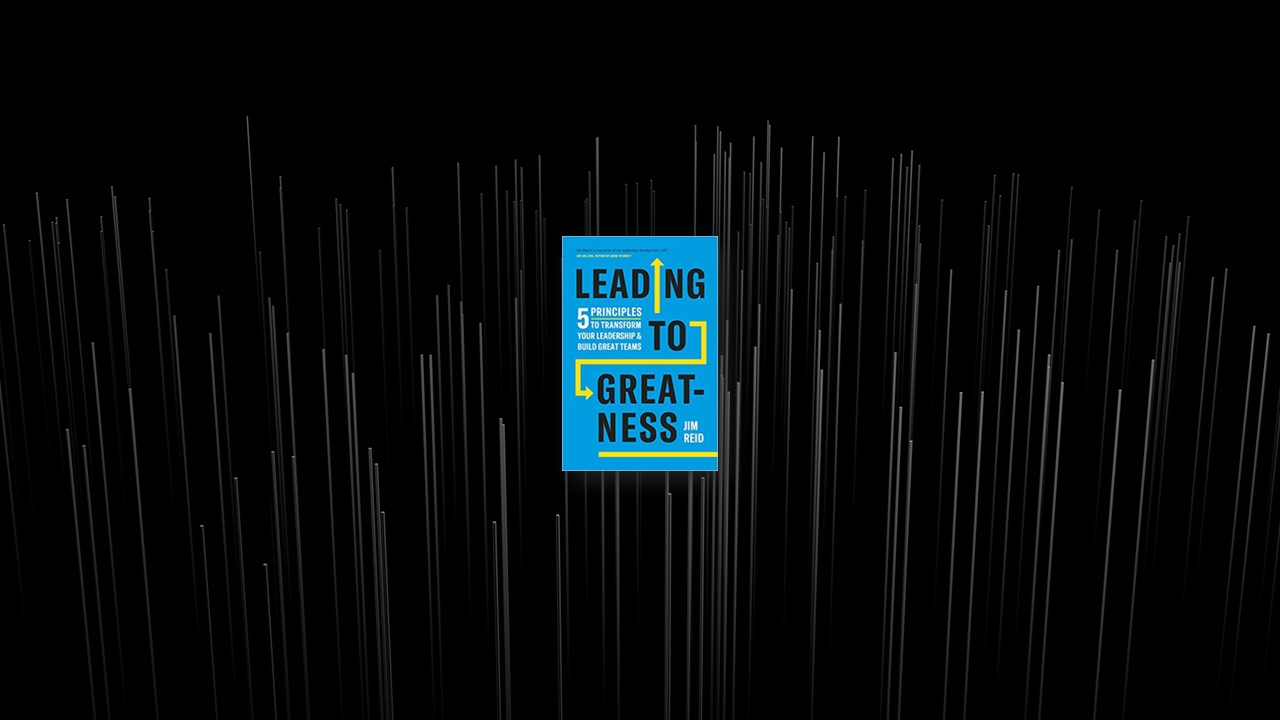Self-Insight Drives Purpose
The paradox of change can provide an architecture for growth in sustainable high performance in any individual, team or organization. The best research completed on this topic is found in Built to Last, coauthored by Jim Collins and Jerry Porras.
The paradox of change is framed in two key questions:
What should not be changed? The answer almost always relates to an individual’s or company’s core values and purpose.
What should be changed? People and companies need to adapt to the changing world around them. The world will be a different place in five to ten years, and those companies and individuals who adapt better than most will be the most successful. As a result, strategy, priorities and culture all must adapt to maintain performance.
Clarity of values and purpose means that the team can expect the leader to be authentic, consistent and predictable.
Clarity of values and purpose enables others in the organization to excel and function with confidence because the leader and team members’ values and purpose are aligned and shared.
Play to Your Strengths — Live with Passion
One of the most powerful concepts that came out of Jim Collins’s Good to Great research is the three circles of the hedgehog concept.

The personal hedgehog concept is about clarity and focus. Research proves that the most significant impact comes from leaders and organizations which operate at the intersection of the three circles.
A personal hedgehog concept is not a goal to be the best, a strategy to be the best, an intention to be the best or a plan to be the best. It is about developing a deep understanding of what you can be the best at. The top leaders operate this way every day.
Playing to your strengths and passions is the path to your greatest success.
Finding the Right People and Building a Strong Team
Instead of asking, “Where do you want the bus to go?,” Collins said organizations should ask, “Who do we want on the bus?” His research challenged the assumptions in many organizational design models, including the 7-S Framework by McKinsey.
The three disciplines are
- If in doubt, do not hire. (And when you do hire, hire for the right fit.)
- Put your best people on your biggest opportunities — not your biggest problem.
- When you know you need to make a people change, act!
Our partners and closest friends are important enablers of our success.
Although the top executive is critically important to building a great executive team, the reality is that great teams drive great companies. No CEO can drive a company on their own.
Leaders help shape and build the culture within their teams, and culture is changed one leader at a time, one team at a time. You behave your way to restoring a culture to its center or starting a new culture.
Getting to Full Engagement
Life is not a marathon but a series of sprints; a delicate balance exists between two forces (stress and recovery), and achieving balance between the two is critical in managing our lives.
When it comes to driving full engagement, leaders must not only lead the way; they must also set a good example.
No one can be at their best 24/7: “When we expend energy, we draw down our reservoir. When we recover energy, we fill it back up. Too much energy expenditure without sufficient recovery eventually leads to burnout and breakdown.”
To achieve full engagement, we must be physically energized, emotionally connected, mentally focused and passionately aligned with a higher purpose.
Good leaders don’t begin the process of engagement building by presenting a model or process and asking that it be followed. Rather, they start with results and ask themselves, “What team practices will deliver these results?”
Inner Discipline
The team is the building block of an organization. It is the performance unit. Its energy and enthusiasm can infect an entire organization, tweaking the culture while remaining true to the values and ethics that are the organization’s permanent and foundational principles.
A culture of discipline separates the great companies from their lesser-performing peers.
Great leaders possess a disciplined drive for results. Inner discipline enables leaders to outperform on a sustainable basis, while a disciplined culture becomes the execution engine of any successful team or company. The best leaders create immense followership by setting a tone within their team, a tone that comes to life through five hallmark behaviors.
Culture is the company’s execution engine. A disciplined culture not only drives high performance, but it also helps sustain performance over the long term.
The stronger the culture, the stronger the results. Culture is the only real source of sustainable competitive advantage we have.
Building a Winning Team
Building high-performance teams requires people to develop a level of commitment to their fellow team members that rivals the level of commitment they have in their strongest relationships in life — with their partners, best friends and families.
Putting together a high-performing team depends on two factors: finding the right people and creating the right environment, where people feel valued and respected. When leaders are clear about what they believe, where they are going and why, finding the right people is much easier.
Dave Ulrich’s research suggests that the two primary roles of the leader are to create customer value and shape a winning culture.
At the organizational level, strong cultures are built one team at a time.
The value chain for building a high-performance organization begins with culture.
Driving Successful Change
The world is moving too fast for leaders or organizations to think that the status quo is good enough. You either move forward and adapt or run the risk of being left behind. Virtually every leader will confront the prospect of wrenching change over their business lives, and how they manage it will largely define their careers.
Communication is always critical. But in times of change, it is even more critical to success. Think of increasing the pace and volume of communication by a factor of ten because this will help stabilize those impacted by the change and keep them focused on what is most important.
Finally, people will go along with change only if they feel heard and safe. If they feel that the future will get them personally to a better place, that will also make them more likely to go along with change.
Crisis Leadership
When facing a crisis, in the words of Admiral Stockdale, “You must never ever ever confuse, on the one hand, the need for absolute, unwavering faith that you can prevail despite [your] constraints, with, on the other hand, the need for the discipline to begin by confronting the brutal facts, whatever they are.”
When you are experiencing a personal crisis, ask for help and support. The same goes for the workplace. Never ever feel you cannot ask for help.
To follow a leader in a crisis, people need to trust that their leaders have their best interests at heart, and that the leaders are following a path that they believe will get them and their team to a better place. As the leader, you need a crisis checklist to be prepared for what can suddenly erupt in front of you.
However, no one checklist can cover every eventuality. You will be called to be adaptable, innovative and creative. You can build this mindset through education. Building this mindset in your team is perhaps the most precious activity you can undertake.
The Leader as Coach
Creating a coaching culture within an organization requires developing a culture that is psychologically safe and committed to learning. The Association for Talent Development defines a coaching culture as one that meets at least five of the following six criteria:
- Employees value coaching.
- Senior executives value coaching.
- The organization has a dedicated line item budget for coaching.
- Coaching is available to all employees.
- Managers, leaders, or internal coaches receive accredited coach-specific training.
- All three coaching modalities (internal coach practitioners, external coach practitioners, and managers or leaders using coaching skills) are present in the organization.
Coaching is no different from any other task or skill. It needs to be structured, systematic and built on a framework.
Coaching is not about the answers you give but about the questions you ask. The ultimate objective is to build ownership for the outcome in the coachee.
Coaching Individual Transformation
More than a third of employees quit their job because of their boss. Why? How do we as leaders help our people find their work more rewarding, their collaboration with coworkers richer and more productive, and their brand loyalty stronger? What has been missing from the leadership toolbox to turn engagement numbers around? The answer lies in coaching for career advancement — both your own and that of the team members who need your mentorship and support.
The best leaders know how important it is to master the fundamentals of building strong, high-performing teams. They become exceptional at selecting the right talent for their teams, and they develop a deep and teachable point of view on how to build a culture within the team that delivers outstanding results on a consistent basis.
To accelerate your career, engage a mentor and a sponsor. You need to build sponsorship early and often in your career to make sure you have the support ready when a new role that is aligned with your career plan becomes open.


